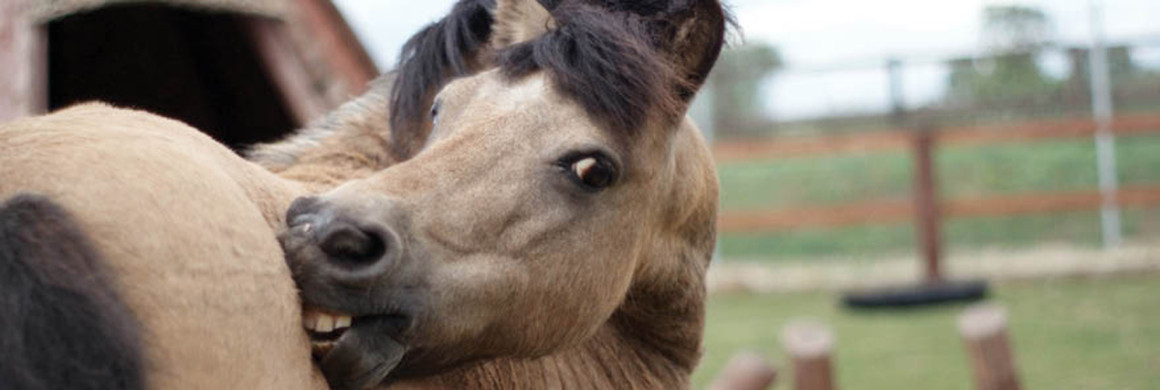Summer often brings a host of skin problems for horses. Hot weather, summer storms, and swarms of insects can make misery for the most resilient of horses. What are some common summer skin problems for horses, and what can we do about them?
Bug bites: Hives, wheals, and itching can be a sign of insect allergies. Reactions to no-see-ums is often called sweet itch, but any biting insect can cause itching and discomfort. This can lead to hypersensitivity and everything that comes with an itchy horse: skin damage, hair loss, infections, all caused by a horse that can’t stop rubbing his bug bites against the nearest stall door or fence post.
Make it hard for bugs to get to your horse. Keep the horse stabled when the bugs are most active, and put several fans around the stall, to keep the air moving too fast for insects to alight on the horse. Fly sheets and fly spray are also helpful. Examine the fly spray to be sure it’s a repellant, not an insecticide. Many fly sprays are actually chemicals that kill the fly after it’s already bitten the horse, which won’t help your allergic horse.
If the horse has rubbed away skin and is in danger of developing infections, you can use an antibacterial shampoo containing an agent like chlorhexidine to clear it out. Sometimes veterinary attention, including antibiotics, is necessary to clean up a secondary skin infection from insect allergies.
In the longterm, your vet can do allergy tests and possibly develop a vaccine for your horse to desensitize him to insects or other environmental allergens, but this can take some time to take effect.
Rain rot: Rain rot is a particularly nasty type of bacterial infection that occurs in humid regions. Bacteria settle themselves in the outer layer of skin and cause large scabs. It’s often treated as a fungus, which is one reason it can take hold so thoroughly — it’s not a fungus, so antifungal treatments aren’t the right treatment. Rain rot that is caught early on can be treated by scrubbing the scabs away with shampoo and a curry comb. If the bacteria gets into deeper layers of the skin, veterinary care and antibiotics might be needed to kick the infection.
Dry skin: Flaking dandruff, dry skin, and hair loss which coincides with hot weather might be due to a lack of fatty acids in the diet, but it might also be a warning sign of anhidrosis, a failure to sweat. When the horse stops sweating, the sebaceous glands have nothing to carry oils onto the skin, and the dry skin grows itchy. Anhidrosis is a serious condition that often affects horses in hot climates. Be sure that you’re keeping a horse who isn’t sweating well cool, using fans, cool water, and shade, and stave it off by cooling out hot horses carefully after workouts.
Summer can mean skin problems in horses, but many of them can be prevented with an ounce of prevention. Using insect repellants (not insecticides!) and keeping your horse cool and clean can keep away the bacterial infections that are just waiting for an opportunity to infect your horse’s skin.


